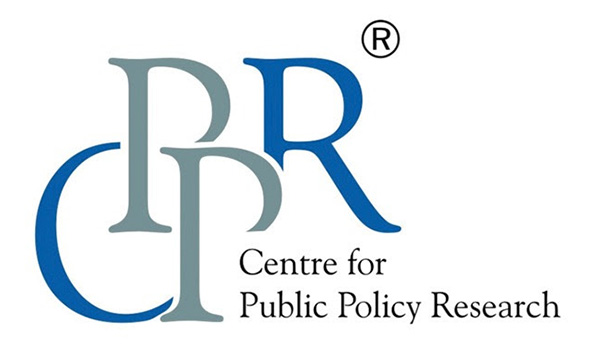From the blog

The transport sector accounts for one-third of the total crude oil consumed in the country, where 80 percent is consumed by road transportation alone. This sector contributes 142 million tonnes of CO2 emissions, of which 123 million tonnes is released by the road sector alone. According to a United Nations report, India’s urban population is projected to reach 675 million by 2035, second only after China’s one billion. Six cities make up 15% of India’s economy and two of these (Mumbai and Bengaluru) are among the world’s top ten most congested cities.
With the rising per capita income and output, the frequency of these vehicles on the roads is only expected to rise. Hence, public transport can reduce the release of fuel emissions and particulate matter, leaving cleaner air to breathe for better health. Surveys in key commercial areas in Indian cities indicate that personal vehicles occupy more than 85 percent of the parking spaces but meet only a small percentage of the travel demand, typically as low as 4–15 percent. In contrast, buses take up barely 4–5 percent of the total ‘equivalent car space’ (ECS) of parking spaces but carry 20 times more people than cars.
The conventional mode of vehicle uses ICE (Internal Combustion Engines) as currently 99.8% of global transport is powered by ICEs and 95% of transport energy comes from liquid fuels made from petroleum. Although the current ICE vehicles come with impressive mileage and speed, their energy efficiency is quite low. A petrol/diesel car converts only 17–21 percent of the energy stored in the fuel to the wheels while EVs convert 60 percent of the energy from the grid to power the wheels. Moreover, ICE vehicles require regular maintenance which adds to the financial budget of an individual or government in the case of public transport. It also significantly contributes to noise pollution which affects breathing and sleeping patterns, blood pressure, and heartbeat rate. Though the governing agencies in India have tried to control GHG emissions of ICE vehicles by introducing several rounds of Bharat Standard norms, the huge costs and time associated with its implementation have not shown fruitful results in the short term. Electric mobility has emerged as one of the contemporary alternatives to fossil fuel-based vehicles.
Governments across the world are trying to incentivise people to switch to electric vehicles through different incentives like tax exemption, subsidies, and building charging infrastructure. However, it might take time for people to adopt electric vehicles due to the high upfront costs, lack of charging infrastructure, and lack of standards and authentication. Thus, the government should try to promote electric vehicles initially by enhancing mass transit like buses. India has 1.2 buses per 1000 people, which is significantly lower than other developing countries like Thailand (8.6), Russia (6.1), and South Africa (6.5), despite India’s population being greater among these. According to benchmarks set by the Ministry of Housing and Urban Affairs, Indian metros require 60 buses per lakh population. Going by these numbers, the country is operating at less than one-fifth of the buses it needs and to serve the users adequately, it needs to add an additional 1,45,000 buses (Jain, 2022). Thus, it is an appropriate time for the government and manufacturers to invest in the deployment of electric buses.
State-run electric buses are meant to offer low-cost rides to its commuters. Many states run transport undertakings reel under loss due to high operational costs but insufficient revenue, which makes it unprofitable. In turn, commercial banks, generally private sector banks, hesitate to grant credit to the STUs. However, this can be mitigated by the Gross Contract Model, where STUs pay a fixed remuneration to electric bus manufacturers, who are also responsible for operation and maintenance.
Battery accounts for more than 40 percent of the upfront cost of an EV. India is currently dependent on lithium cell battery requirements as it imports nearly 70% of lithium cell batteries, mainly from China and Hong Kong. Since India lacks access to raw materials and refining capabilities of crucial minerals like nickel, cobalt, lithium, and manganese, it needs to strengthen its manufacturing by promoting R&D, start-ups, and collaboration between government, academia, and policy strategists. To encourage battery manufacturing in the country, the government has come up with a package of ₹18,000 crores to boost domestic manufacturing and facilitate battery storage of ACC (Advanced Chemistry Cell) cells. Further in the FY 24 budget, the union government has provided custom duty exemptions on the import of machinery, equipment, and other capital goods needed to manufacture battery cells, to lower EV costs in the long run. The scheme may lead to large-scale manufacture of batteries which may increase their availability and ultimately eradicate the hesitation of probable EV buyers who are concerned about the battery replacement cost. Further, setting up charging stations powered by renewable energy can further mitigate GHG emissions.
Despite challenges and limitations faced by electric mobility development, it is one of the best possible solutions to mitigate greenhouse gas emissions by the transport sector, given that India needs to achieve 30 percent electric mobility by 2030 and a net zero emissions target by 2070. Though intra-state inequality persists in terms of the deployment of buses, encouragement of electric mobility by state governments in collaboration with the central government through tax holidays, grants and loan insurance can galvanise OEMs to localise production of most of the components of buses. With the rising metropolitan population, rural-urban migration, and tourism, intra-city and inter-city bus operations can serve as a lucrative mode of transport to cater to the commuting needs of the ever-increasing population.
Blog written by Priyanshi Agarwal, Research Intern at Centre for Public Policy Research.
Views expressed by the author are personal and need not reflect or represent the views of the Centre for Public Policy Research.



